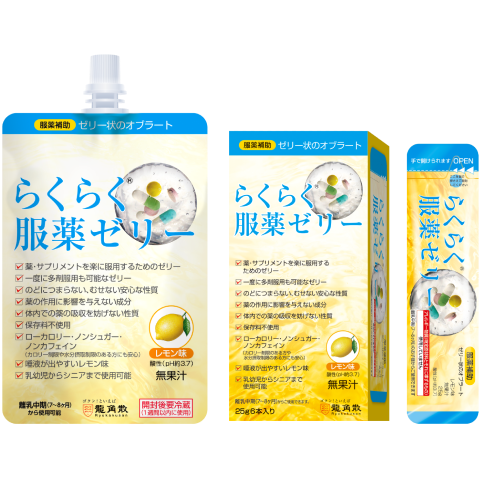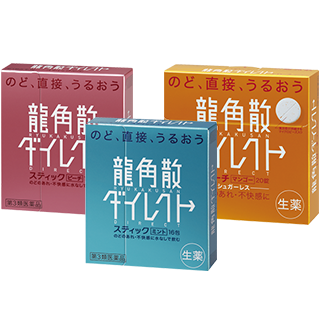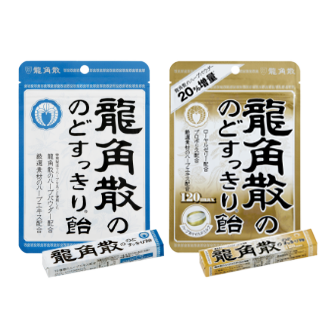
History of Ryukakusan
Early 18th century (mid-Edo period)
The Fujii family served as physicians to the feudal lord of Akita domain (domain lord Satake) for generations.
The original form of Ryukakusan was developed by Gen-en Fujii and his son Genshin who came from the town of Rokugo in northern Japan (modern day Misato-cho, Akita). Genshin incorporated knowledge of rangaku (a type of learning that taught about the West, particularly about Western science and medicine) that he had gained into his family's traditional herbal medicine, and the resulting recipe has been handed down through the generations.

The Fujii family is even referenced in the history of the town of Rokugo.
Mid to late 19th century (late Edo–early Meiji period)
During his tenure as physician to the feudal lord Yoshitaka Satake of Akita domain, Shoteiji Fujii (3rd generation) traveled to Nagasaki for a period to study rangaku. His objective was to cure asthma, an illness that plagued his feudal lord.
He is said to have improved the family medicine into an asthma prescription, establishing the foundation of the current formulation.
When the feudal domains were abolished and replaced with prefectures in the late 19th century, the rights to the Ryukakusan medicine that was prepared from the family recipe were granted to the Fujii family.
Shoteiji, who had moved to Edo (present day Tokyo) with his feudal lord, established himself in 1871 and began selling his product to the general public under the name of "Ryukakusan."
The name "Ryukakusan" came from the names of the ingredients in the original formulation: carina, deer antler, and borneol, known as "ryukotsu," "rokkakuso," and "ryuno" in Japanese.

The location of the present day head office
Source: Map of the Kanda Shrine autumn festival shinko route (early Meiji
period)
Late 19th century to mid 20th century (mid Meiji–early Showa period)
In 1893, Tokusaburo Fujii modified Ryukakusan into its final form as a fine powder preparation and established his own store called Fujii Tokusaburo Shoten.
The formulation and dosage form of Ryukakusan have changed very little since then, and the herbal ingredients continue to be the principal agents.
The origin of the dosage form can be found in Chinese medicine, which has thousands of years of tradition.
Towards the end of the Meiji period, Fujii Tokusaburo Shoten was actively engaging in marketing activities, posting eye-catching advertisements on newspapers.
At that time, the more signboards advertising medicines posted by a drug store, the more trustworthy the store was thought to be.
In 1928, Fujii Tokusaburo Shoten was reorganized into Fujii Tokusaburo Store Co., Ltd.
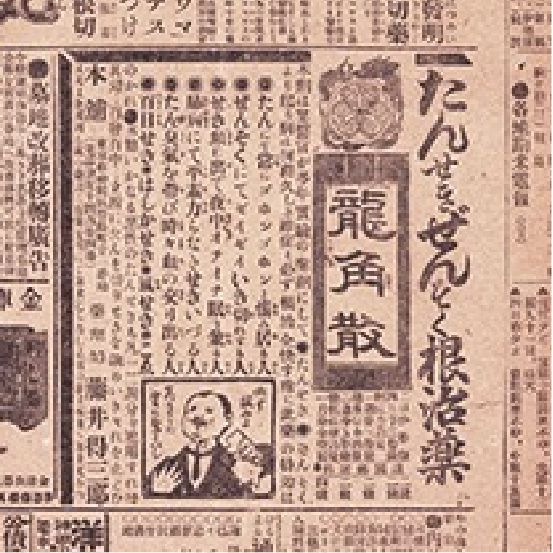 A newspaper advertisement from the early 20th
century
A newspaper advertisement from the early 20th
century
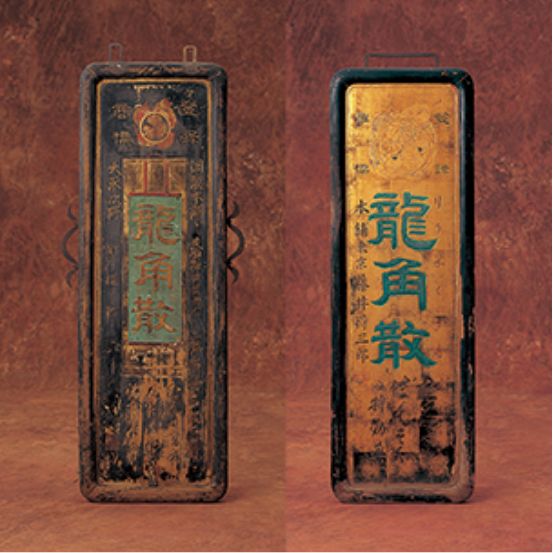 Gilded signboards from the Meiji period
(1868–1912)
Gilded signboards from the Meiji period
(1868–1912)
 Former head office of Ryukakusan after the
Great Kanto Earthquake
Former head office of Ryukakusan after the
Great Kanto Earthquake
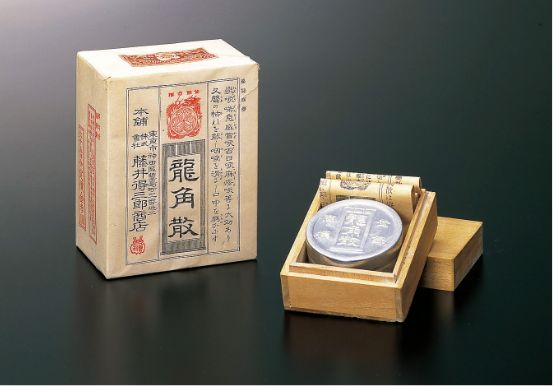 Products from around 1935
Products from around 1935
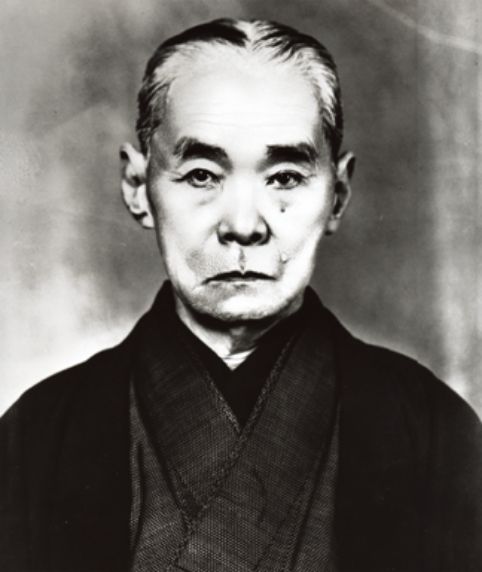
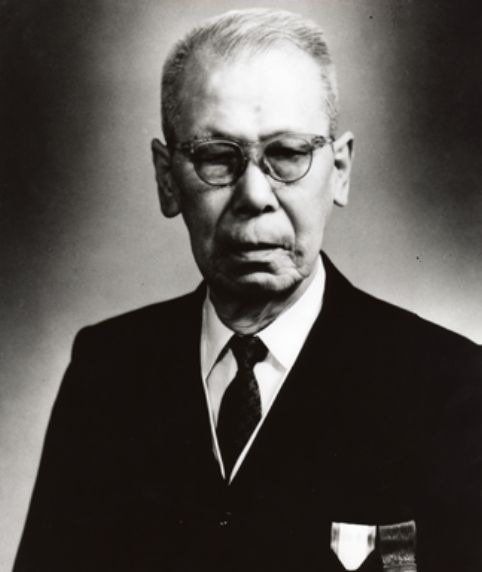
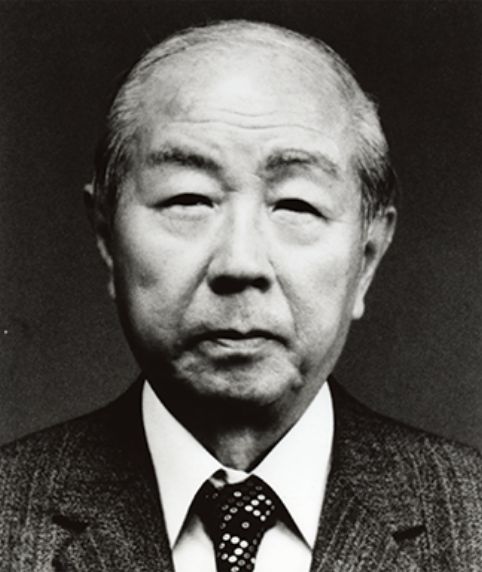
Mid to late 20th century (mid Showa–early Heisei period)
The company began exporting Ryukakusan to Asia from around 1950.
In 1963, Yasuo Fujii (7th generation) assumed the position of President.
In 1964, Fujii Tokusaburo Shoten Co., Ltd. was renamed Ryukakusan Co., Ltd.
The product Clara was launched, targeted at white collar workers.
In 1967, the company also launched Ryukakusan Lozenge, the first lozenge released in the Japanese market. This has the same indications as Ryukakusan but was designed to be easier to take, targeted at women and children.
In 1991, Ryukakusan's new head office building was completed.
A Good Design Award was received from the Ministry of International Trade and Industry (currently the Ministry of Economy, Trade and Industry).
The new Chiba Plant, equipped with research and development facilities, was completed in the Tako Industrial Park in Chiba Prefecture.
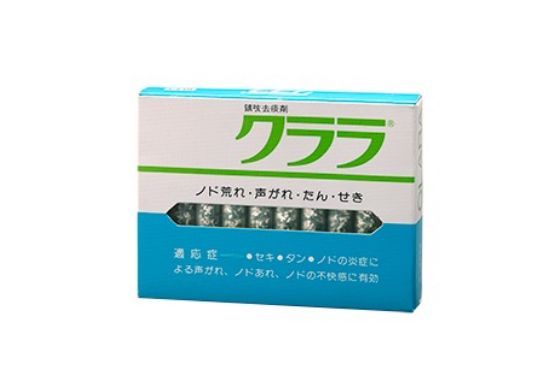 Clara
Clara
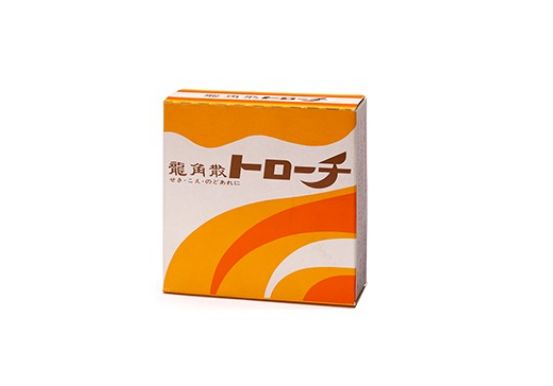 Ryukakusan Lozenge
Ryukakusan Lozenge
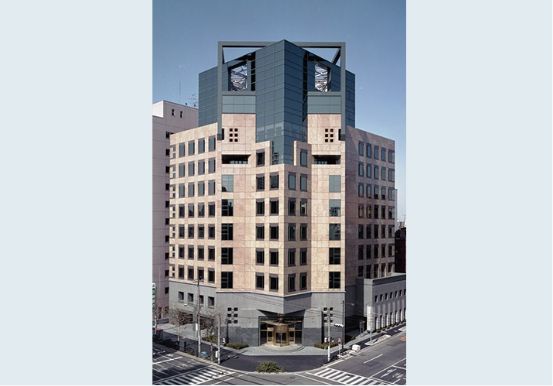 The current head office of
Ryukakusan
The current head office of
Ryukakusan
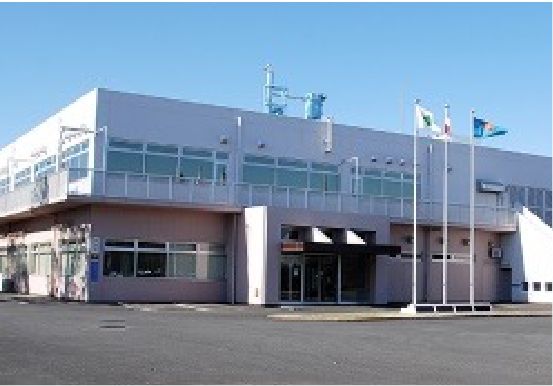 Chiba Plant
Chiba Plant
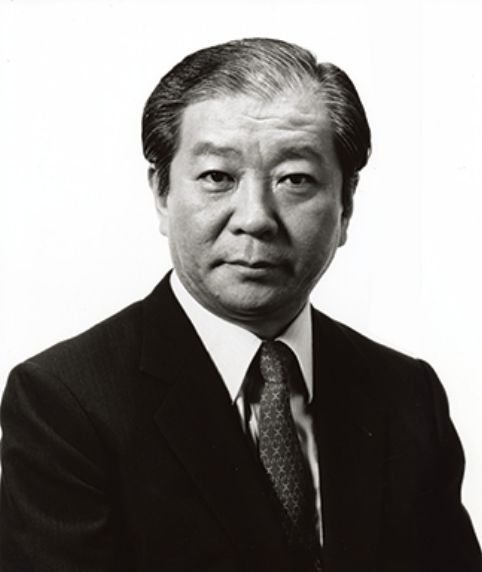
Since late 20th century (from mid-Heisei period)
In 1995, Ryuta Fujii assumed the position of President. In 1998, the company developed the world's first jelly-type oblate "swallowing aid jelly" for the nursing care market. Following this, the company rolled out a series of new products in swift succession, including Swallowing Aid Jelly, Swallowing Aid Jelly for Children, Ryukakusan Direct, and Ryukakusan Herbal Throat Candy.
The company has been tending to the throats of Japanese people for more than 200 years.
In 2013, a regional revitalization partnership agreement was concluded with the town of Misato in Akita Prefecture. Ryukakusan began cultivation of indigenous herbal medicinal plants in Japan. In the same year, President Ryuta Fujii received an award for distinguished service in the health, medical, and welfare fields from the Tokyo metropolitan government.
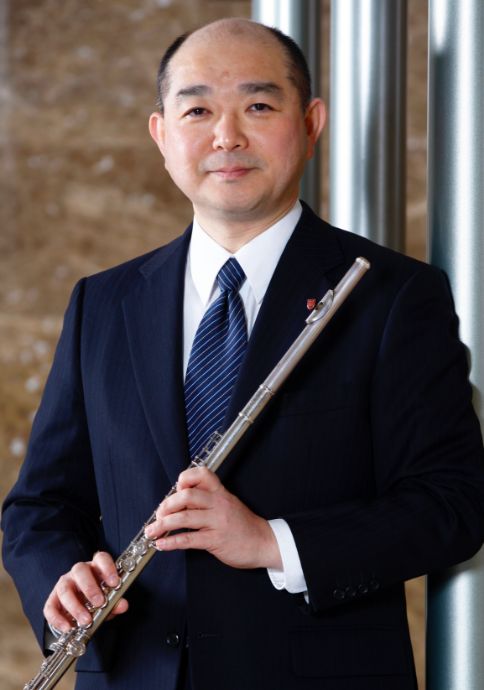

The Ryukakusan Logo
Ryukakusan was founded by the Fujii family who follows the traditions of Akita domain.
After considering various designs for the company logo, a dragon design was decided upon in 1963.
The logo is comprised of three dragons, one on top of the other, decorated with five dots.
The final logo was designed by Dr. Tomio Ogata, an accomplished scholar of the time and the great-grandson of Koan Ogata, who is often referred to as the father of modern Japanese medicine.
With a deep knowledge of heraldry, Dr. Ogata has designed emblems for not only Ryukakusan but also its affiliates.
Chronology
|
Early 18th century |
Ryukakusan was handed down as a family medicine from Akita domain (domain lord Satake). |
|---|---|
|
Late 19th century |
Shoteiji Fujii made improvements to the medicine and named the product "Ryukakusan." |
|
1871 |
The company was founded in the Kanda district of Tokyo. The sale of Ryukakusan to the general public began. |
|
1893 |
Tokusaburo Fujii (1st) modified Ryukakusan into its final form as a fine powder preparation. Fujii Tokusaburo Shoten opened. |
|
1928 |
The company was reorganized into Fujii Tokusaburo Shoten Co., Ltd. |
|
Around 1950 |
Exports of Ryukakusan to Asia began. |
|
1964 |
Clara was launched. The company was renamed Ryukakusan Co., Ltd. |
|
1967 |
Ryukakusan Lozenge was launched. |
|
1991 |
Ryukakusan's new head office building was completed. A Good Design Award was received from the the Ministry of International Trade and Industry (currently the Ministry of Economy, Trade and Industry). The new Chiba Plant, equipped with research and development facilities, was completed in the Tako Industrial Park in Chiba Prefecture. |
|
1998 |
The world's first jelly-type oblate "swallowing aid jelly" was launched. |
|
2001 |
Swallowing Aid Jelly for Children was launched. |
|
2007 |
Swallowing Aid Jelly for Chinese Medicine (strawberry chocolate and coffee jelly flavors) was launched. |
|
2008 |
Ryukakusan Direct Stick (mint and peach flavors) was launched. |
|
2010 |
Ryukakusan Herbal Throat Series (gum, tablet, powder centered candy) was launched. |
|
2011 |
Ryukakusan Herbal Throat Candy was launched. President Ryuta Fujii was awarded a certificate of appreciation from the governor of Tokyo for his contribution to the pharmaceutical area. |
|
2012 |
Ryukakusan Direct Lozenge Mango was launched. |
|
2013 |
A regional revitalization partnership agreement was concluded with the town of Misato in Akita Prefecture. Ryukakusan began cultivation of indigenous herbal medicinal plants in Japan. Swallowing Aid Jelly was launched. President Ryuta Fujii received an award for distinguished service in the health, medical, and welfare fields from the Tokyo metropolitan government. |
|
2014 |
Swallowing Aid Jelly for Herbal Medicine was renewed and relaunched. |
|
2016 |
Ryukakusan Direct Lozenge Mango was renewed and relaunched as Ryukakusan Direct Lozenge Mango R. |
|
2018 |
Swallowing Aid Jelly for Chinese Medicine was renewed and relaunched as Swallowing Aid Jelly for Powdered Medicine. Ryukakusan Herbal Sugar Free Throat Tablet was renewed and relaunched. |
|
2019 |
A Medal with Dark Blue Ribbon and an honorable mention were received for the company's support and contribution to the cultivation of medicinal plants. A partnership was formed with the China Resources Sanjiu Medical & Pharmaceutical Co., Ltd., a leading manufacturer of OTC drugs in China. |
|
2020 |
Ryukakusan Herbal Sugar Free Throat Tablet Matcha Flavor was launched. |
|
2021 |
A business alliance was formed with China Resources Sanjiu Medical & Pharmaceutical Co., Ltd. A business alliance was formed with Taiga Industrial Co., Ltd. |
|
2023 |
REIWA hall was completed in the Chiba Plant. |
|
2024 |
Ryukakusan Herbal Sugar Free Throat Tablet was launched. |

